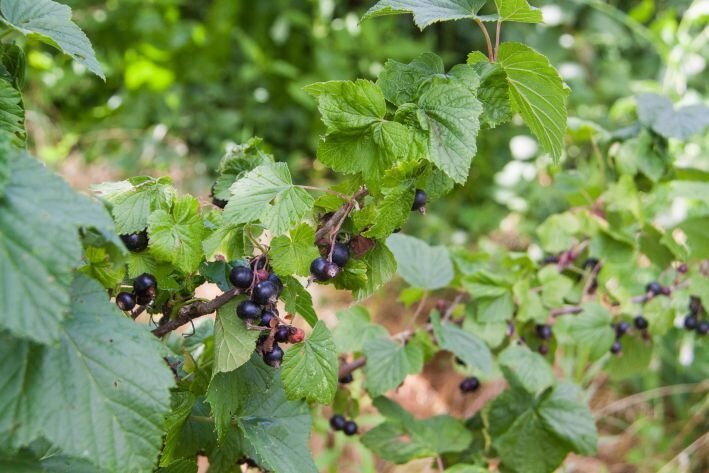Spring is the time when the garden wakes up, and along with it, those who are ready to ruin your harvest become active.
Currants, one of the most beloved crops, often become victims of aphids, bud mites and other pests.
But what if you found out that you don't need expensive chemicals to control them?

Processing currants
For example, regular boiling water can become your secret weapon. Yes, you heard right!
In early spring, before the buds open, currant bushes can be treated with boiling water. This will destroy the larvae of pests that overwinter on the shoots, and will not harm the plant.
The main thing is to do it carefully, evenly watering the bush from a watering can with a sprayer. It is important to carry out the treatment when the snow has already melted, but the buds have not yet swollen.
If you are late, the boiling water will damage the young leaves, and if you rush, it will not have time to warm up the soil around the roots.
After the procedure, you can sprinkle the root zone with ash: this will provide additional protection against fungal infections and potassium nutrition.
Another proven method is an infusion of garlic or onion peel.
Pour a liter of water over crushed garlic cloves or a handful of peels, let it sit for 24 hours, strain and spray the bushes.
The pungent smell will scare away aphids, and the natural composition is safe for future berries. But remember: such an infusion does not work for long, so the treatment must be repeated every 7-10 days, especially after rain.
To enhance the effect, add a tablespoon of liquid soap to the solution - it will help the liquid stick to the leaves.
Don't forget about mechanical protection: regularly inspect branches, remove damaged buds and shoots, and remove fallen leaves from under bushes - pests often overwinter in them.
If you notice swollen buds that look like small cabbage heads, this is the work of bud mites.
Such buds should be carefully cut and burned, and the bush treated with colloidal sulfur. But do this before flowering, so as not to harm the bees.
Prevention
For prevention, you can plant marigolds or calendula next to the currants. These flowers will not only decorate the garden, but also repel insects with their aroma.
And if you notice ants on your property, be careful - they often “breed” aphids, feeding on their sweet secretions.
To interrupt this symbiosis, sprinkle the ground around the bushes with cinnamon or ash - ants do not like strong smells.
Installing trapping belts on tree trunks will also help: wrap them with thick fabric coated with resin or petroleum jelly so that insects cannot climb onto the branches.
A couple of tips
Remember: the health of currants depends on timely actions. Do not wait until pests occupy the bushes - start fighting at the first signs of their appearance. And then juicy berries will delight you all summer!
By the way, don’t rush to pour out the water after boiling the potatoes – you can water the bushes with the cooled broth.
The starch remaining in the liquid will serve as a light fertilizer.
Currants also love yeast fertilizers: dilute 100 g of raw yeast in 10 liters of water, let it sit for a couple of hours and water the plants. This will strengthen the roots and speed up the growth of young shoots.
And the last piece of advice: do not plant currants next to coniferous trees. They create shade and acidify the soil, which oppresses the bushes.
The best neighbors for it are honeysuckle, gooseberry or herbs like mint. And don't forget about pruning! Remove old branches that are more than 4-5 years old - they hardly bear fruit, but take away the plant's strength.
Form the bush so that light and air penetrate into the center - this will reduce the risk of disease.
